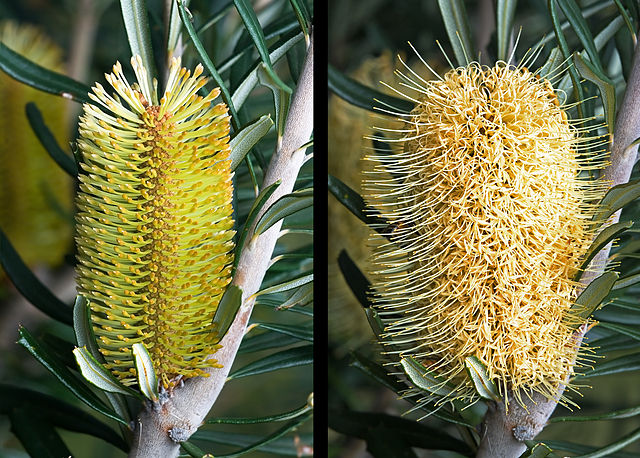Banksia integrifolia, commonly known as the coast banksia, is a species of tree that grows along the east coast of Australia. One of the most widely distributed Banksia species, it occurs between Victoria and Central Queensland in a broad range of habitats, from coastal dunes to mountains. It is highly variable in form, but is most often encountered as a tree up to 25 metres (82 ft) in height. Its leaves have dark green upper surfaces and white undersides, a contrast that can be striking on windy days.
Banksia integrifolia
Inflorescence of B. integrifolia subsp. monticola in late bud
Tree on headland, Manly, NSW
Anthochaera chrysoptera (little wattlebird) on B. integrifolia
Banksia is a genus of around 170 species of flowering plants in the family Proteaceae. These Australian wildflowers and popular garden plants are easily recognised by their characteristic flower spikes, and woody fruiting "cones" and heads. Banksias range in size from prostrate woody shrubs to trees up to 30 metres (100 ft) tall. They are found in a wide variety of landscapes: sclerophyll forest, (occasionally) rainforest, shrubland, and some more arid landscapes, though not in Australia's deserts.
Banksia
Young Banksia inflorescence showing flower buds developing in pairs
B. marginata flower spike before and after anthesis
Seed separator of a silver banksia (Banksia marginata) with winged seeds still cohering








